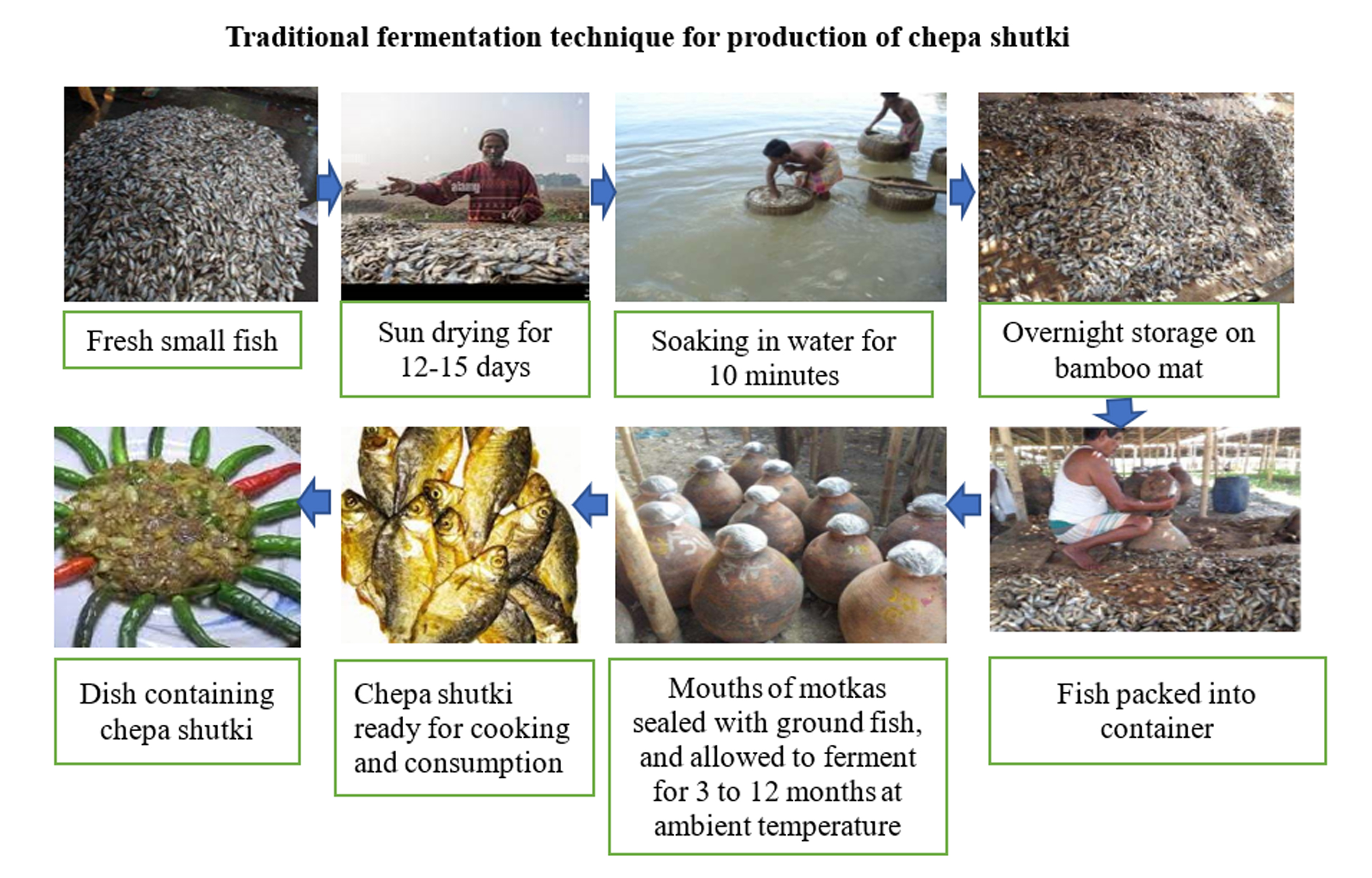
Photo: Daily Messenger
Bangladesh is famous for its numerous shallow water bodies (locally called beel) that provide an excellent habitat for weed-eating fish but can fully or partially dry up during winter. At the end of winter fishermen harvest many of the small indigenous fish. Traditionally, fermentation practices have been developed to preserve the heavy catches of less valued weed fish for consumption and sale in lean periods when fish are scarce. Traditional fermentation techniques developed by our ancestors originated long before salting food became common practice.
Characteristics of traditional fermentation technology include:
- No Starter cultures
- No additives or preservatives
- No heating or cooking
- Totally anaerobic condition is maintained within earthenware pots.
The main reasons that traditional fermentation practices have been developed are:
- Lack of an appropriate environment for simple sun drying of fish
- Unavailability of ice
- Lack of good Road transportation
- Salt was too highly valued and scarce in the past
- To alleviate the mundane nature of a rice-vegetable diet in the lean season.
One example of a traditionally fermented fish product is chepa shutki, a sticky, solid, salt-free product prepared from small fish by artisanal fishermen.
Chepa shutki can be consumed as a chutney or sauce with rice or bread and is commonly manufactured according to a small-scale traditional technique relying on spontaneous fermentation (naturally existing microorganisms). No starter cultures are added and fermentation takes place in airtight earthen pots (locally called motkas) which have been smeared with fish oil to ensure anaerobic condition. The fermentation duration varies from three to twelve months. By adjusting parameters such as fermentation period, type of fish and type of container, the fermentation process can be controlled to ensure desired beneficial bacteria are present resulting in greater nutritional value, safer preservation and a sustainable supply of fermented small fish for consumption in the long term.
In summary, traditional fermentation preserves small fish, preventing spoilage and plays a crucial role in improving nutrition and food security of Bangladeshi people.

The writer, a PhD candidate at Wageningen University and Research, the Netherlands, is working as Associate Professor, Department of Human Nutrition and Dietetics, Patuakhali Science and Technology University.
She can be reached at: [email protected]
Read More from her:
Messenger/Howlader








